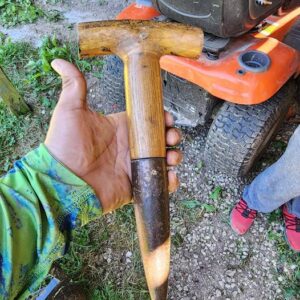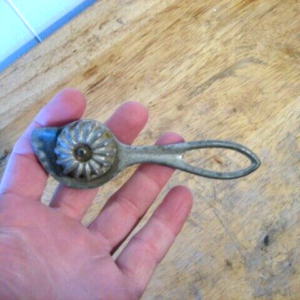The Vintage Corn Cutter: History, Usage, and Legacy
History of the Corn Cutter
The vintage corn cutter, a simple yet ingenious kitchen tool, emerged in the late 19th and early 20th centuries. As home canning and preserving became essential practices in American households, the need for efficient food preparation tools grew. Inventors responded by creating various corn cutters to streamline the process of removing kernels from corn cobs. These devices, typically made from wood and metal, quickly became indispensable in kitchens, especially during harvest seasons.
Usage of the Corn Cutter
Using a vintage corn cutter involves placing the cob into the tool and sliding it through the blade. The cutter strips the kernels cleanly and efficiently, making the process much faster than doing it by hand. Home cooks utilized these cutters to prepare corn for canning, freezing, or immediate use in recipes. The simplicity and effectiveness of the corn cutter made it a staple in many households, particularly in rural areas where fresh corn was plentiful.
These tools came in various designs, from hand-held cutters to those mounted on wooden boards or countertops. Some featured adjustable blades to accommodate different cob sizes, while others incorporated trays to catch the kernels. Regardless of the design, the primary function remained the same: to make the task of kernel removal quicker and less labor-intensive.
Legacy of the Corn Cutter
The legacy of the vintage corn cutter extends beyond its practical use in the kitchen. It represents a time when self-sufficiency and home food preservation were crucial aspects of daily life. These tools evoke memories of family gatherings, communal harvests, and the satisfaction of preparing homegrown produce for future meals.
Today, vintage corn cutters are cherished by collectors and enthusiasts of antique kitchenware. They serve as reminders of a bygone era, highlighting the ingenuity and resourcefulness of past generations. Some modern cooks even seek out these antique tools for their functionality and nostalgic value, preferring the tactile experience of using a well-crafted, time-tested device over modern electric alternatives.
In addition to their historical and practical significance, vintage corn cutters are appreciated for their craftsmanship. Many were made by skilled artisans and designed to withstand the rigors of regular use. Their durability and timeless appeal have ensured their place in both kitchens and collections, preserving a piece of culinary history for future generations.
Conclusion
The vintage corn cutter stands as a testament to the ingenuity and practicality of past kitchen innovations. Its history is rooted in the necessity of efficient food preparation, while its usage showcases the importance of home preservation techniques. The legacy of the corn cutter endures, reflecting a blend of functionality, craftsmanship, and nostalgia that continues to captivate those who appreciate the tools and traditions of yesteryear.



